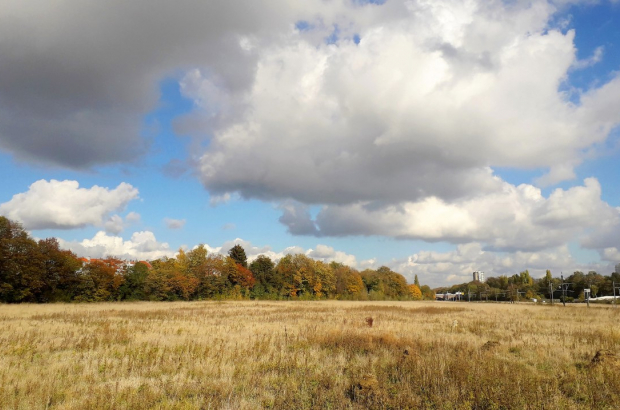- Daily & Weekly newsletters
- Buy & download The Bulletin
- Comment on our articles
Josaphat site rated as ‘ecologically valuable’ by government agency
The Josaphat site in Brussels, where a war is waging between the Brussels government and citizen’s action groups, has been declared an ‘ecologically valuable area’ by the Nature and Forest Research Institute. Part of the site has even achieved an ‘A’ rating, the same rating when it comes to biodiversity as the Sonian Forest.
The Josaphat site in Schaerbeek, near the park of the same name, was a former marshalling yard but has been unused since 1994. The rails were eventually removed, and nature took over, creating an urban wilderness. The site is home to naturally growing grasses, plants and shrubbery and is dotted with pools.
The domain has become a fertile home for birds, foxes and insects, particularly dragonflies and bees. In fact, 120 different species of bees have been recorded on the site, an incredibly diverse number for the size of the area.
A couple of years ago, the Brussels Capital-Region decided to develop the site, drawing up a plan for 1,400 flats, a hotel, a school and an industrial zone. Following strong protest from neighbourhood residents and environmental groups, the region altered the plan.
‘A complete mockery’
According to David Van Reybrouck, a spokesperson for the effort to preserve the Josaphat site, the new plan was “a complete mockery of all the arguments that scientists and citizens have put forward. Nothing, but nothing, of the richness of the species will remain.”
It has now been revealed that the Josaphat site has been deemed as ecologically valuable. The Nature and Forest Research Institute, a Flemish government agency that develops biotope data for both Flanders and Brussels, has assessed the site and submitted its results according to its biological rating map.
The entire site west of the rails received a score of ‘A’, indicating the highest possible value of biodiversity. The rest of the site received a ‘B’ or ‘C’. The results have been submitted to the Brussels government, which had not yet made them public.
According to Brussels environment minister Alain Maron (Ecolo), he did not want to release the information until his cabinet could study the options. The results, however, were leaked this week.
Maron said that the biodiversity rating was already known when the second version of the development plan was drawn up. Regardless, development was planned for the most ecologically valuable part of the site.
“We are of course glad that the region has now officially recognised what everyone already knew,” said Steyn Van Assche of the citizen’s action group Bral. “But it is unfortunate that the results of the biodiversity mapping have been released so late in the process. It’s also unfortunate that this map is not a legally enforceable document. We can only hope that it is factored into the plans. It is yet another argument that the current master plan needs to be revised.”
Photo ©Natagora Bernard Pasau/BELGA


















